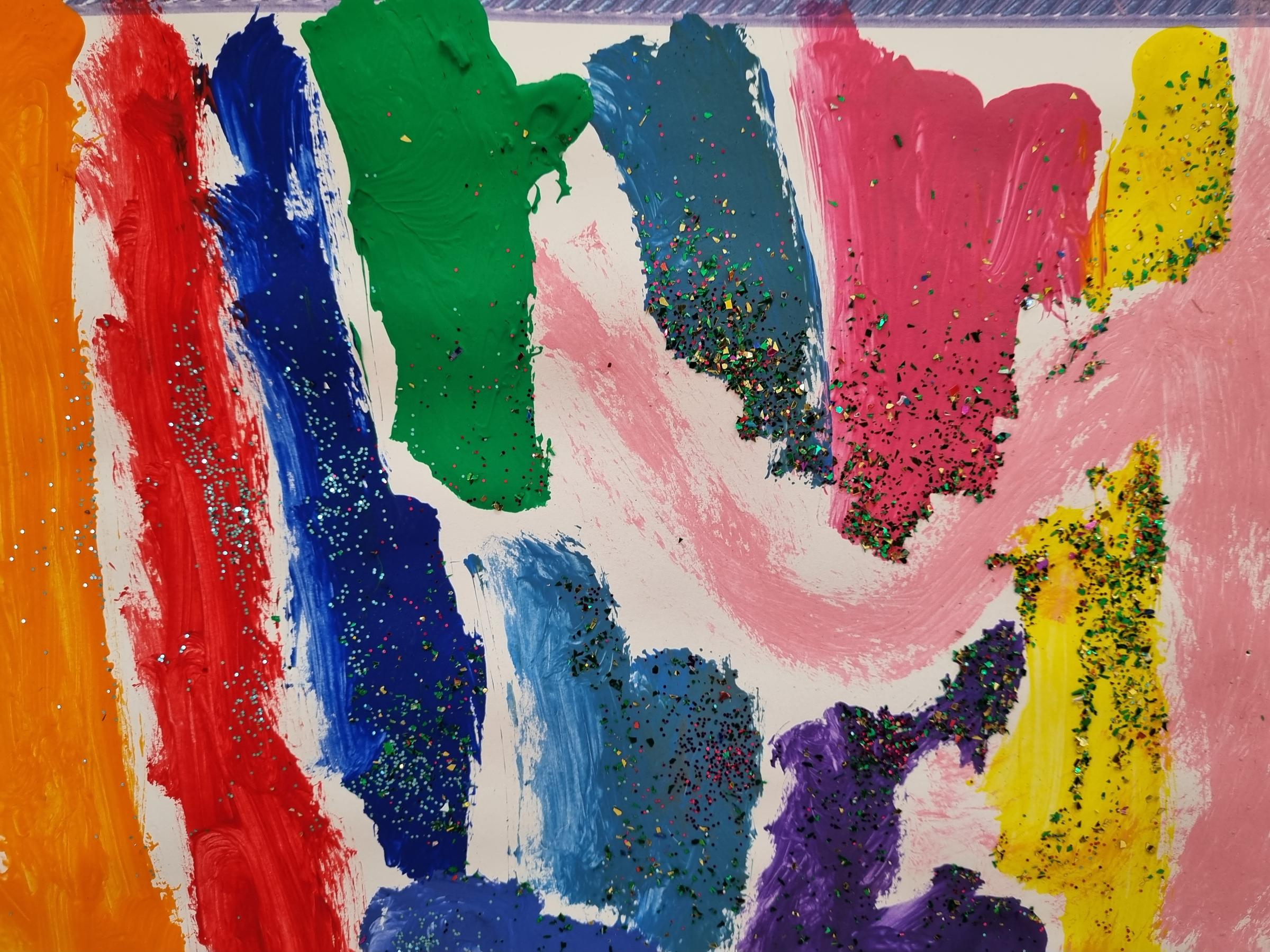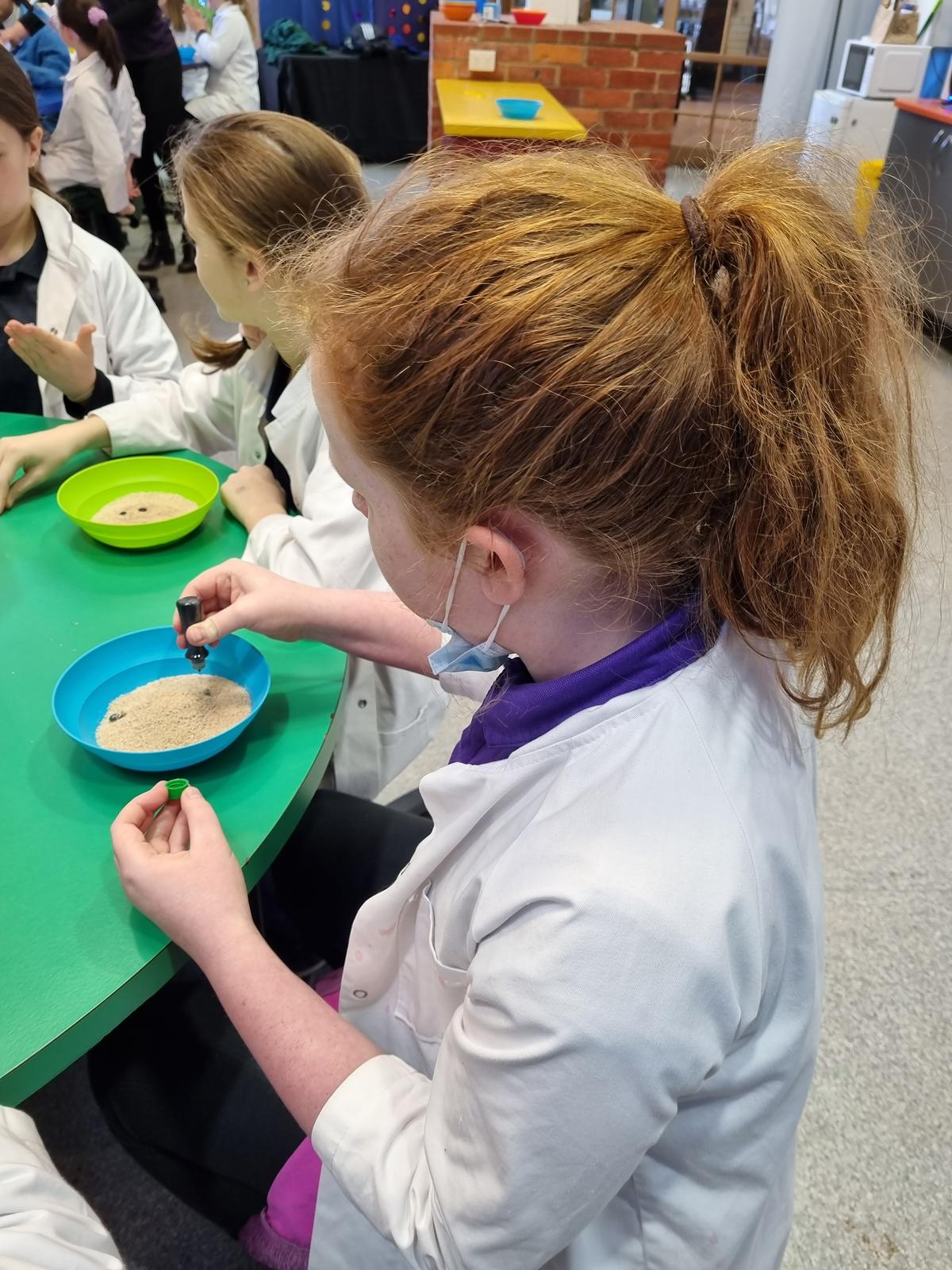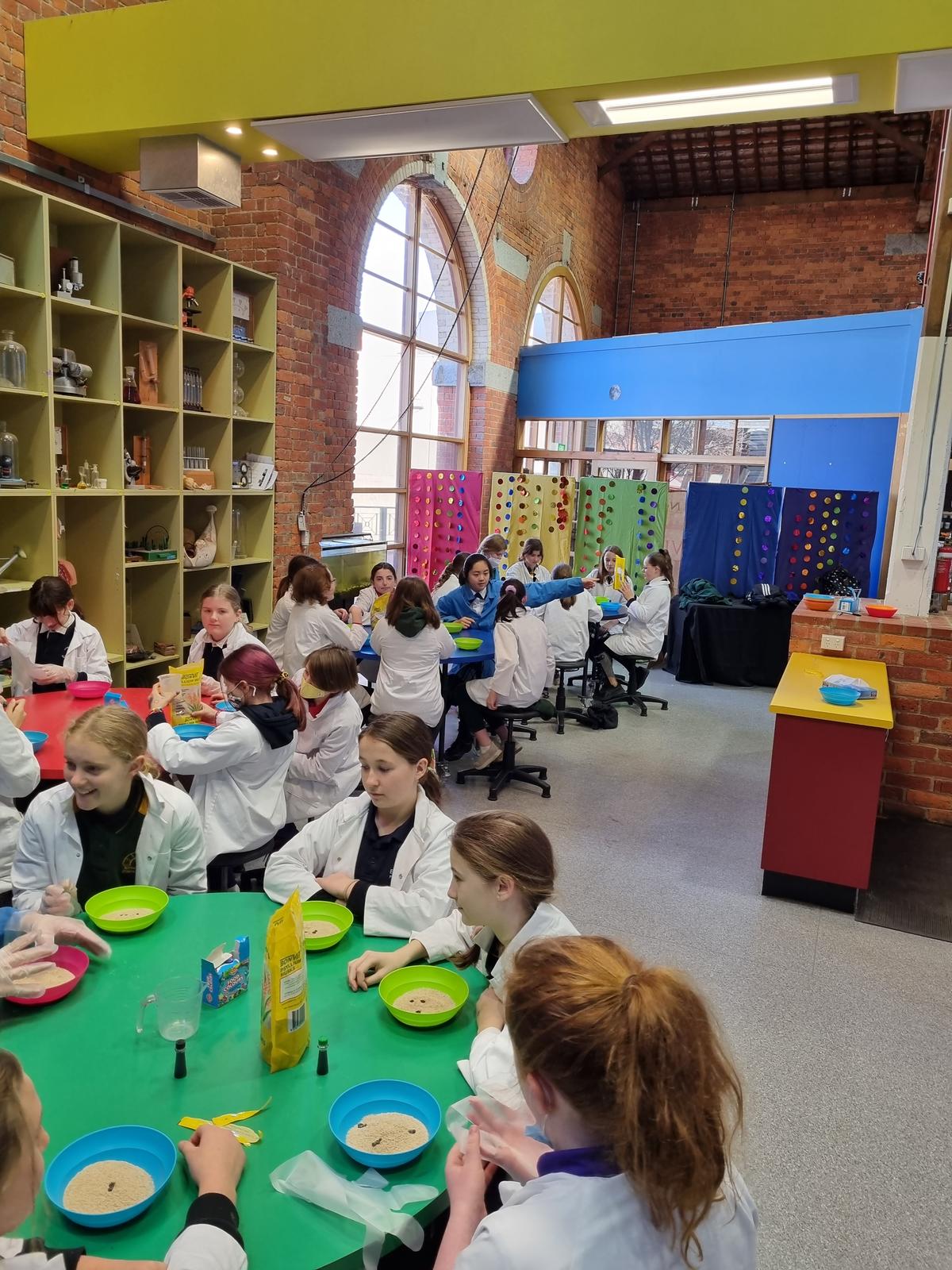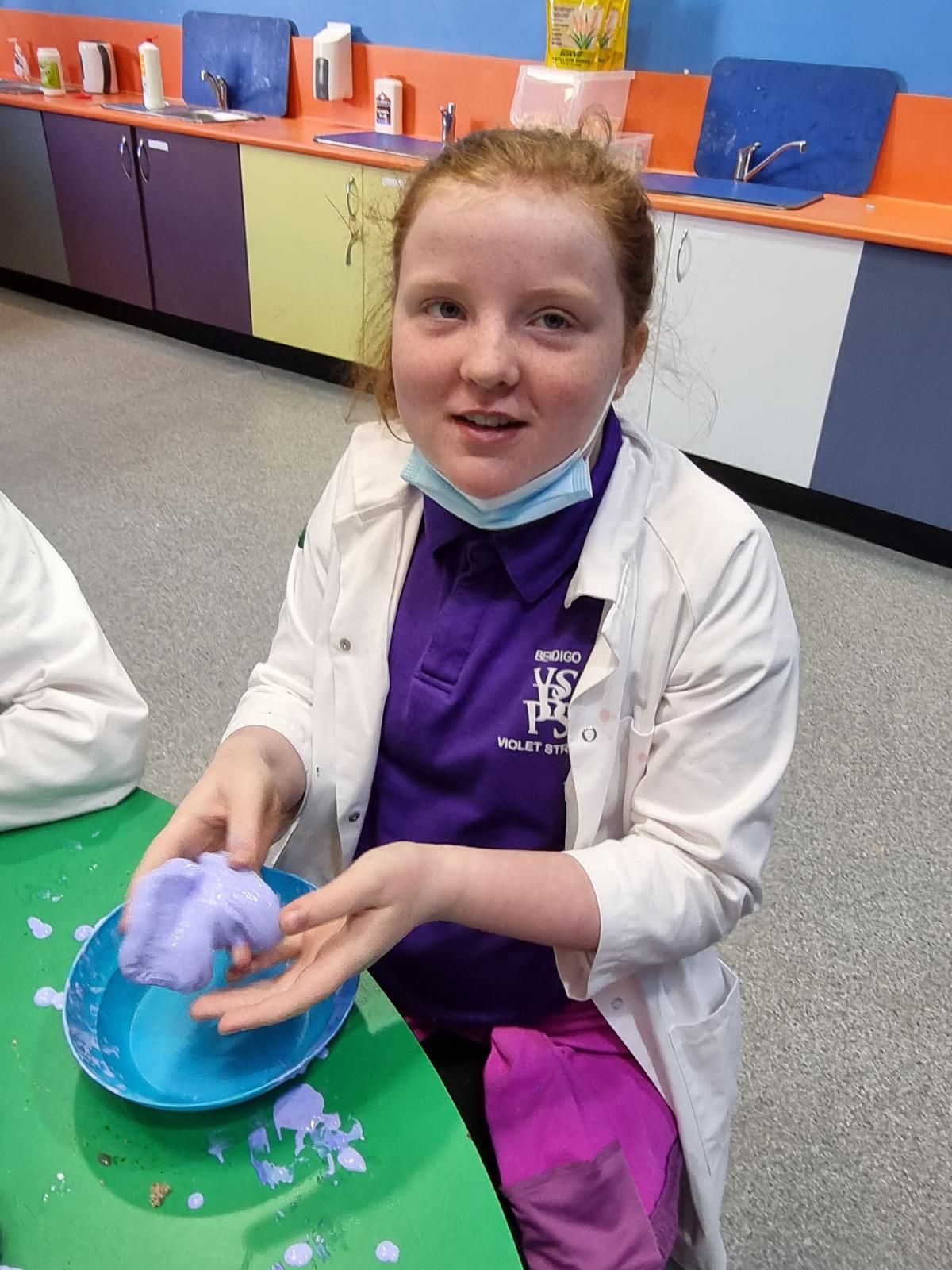Girls in Science - STEM.
Discovery Center

Girls in Science - STEM.
Discovery Center
On Tuesday the 19th of July I went the Discovery Center as a part of the Stem-Girls in Science Program. I learnt about chemical reactions with a household favourite [not with the parents though] slime! We got to make 2 different types of slime, for one we used borax, water and PVA glue. This was very interesting I didn't expect the glue to turn into slime but with the help of borax it did.
The first slime I made used psyllium husks and water, it smelt terrible. The psyllium husks turned into a putty which was less like slime than the other. I suggest that if you don't want your house to smell like wheat, you should try the other slime. I think this one was the best because it didn't smell bad and it showed me how borax turns glue to a slime.
Here are some slime recipes to try at home, with your parent's permission. Remember, if you make PVA slime using borax, you have to wear rubber gloves when mixing it. I can't wait for my next Stem session with Sian.
By Freya.






Experiment 1- soapy slime
Jar
Warm water
A little bit of a bar of soap
1. break down the soap to small pieces
2. Put in jar with two tablespoons of warm water and seal jar
3. Leave for 30mins
4. Shake jar vigorously
For best results you can grate soap and mix with a blender or electric mixer
Science
Whipping the hot soapy solution creates a foam, which is a colloidal dispersion of a gas in a liquid. The gas in this case is air and the liquid is the soapy solution. The resulting soapy foam is so dense it feels slimy to the touch! A small amount can easily fill a large tub, which makes it an inexpensive way to make mountains of it for the kids to play!
Experiment 2- snotty slime
Metamucil/psyllium husk
hot water
bowl
spoon
food colouring
1.In a large microwave safe bowl, whisk together the Metamucil and the water for about 1 minute.
2.Microwave on high for 4 minutes. Keep an eye on it, and pause the microwave for a few seconds if it looks like it's going to bubble over.
3.Remove from the microwave and stir.
4.It's hot, so make sure you allow it to cool before handling it.
Science
Psyllium is a type of seed, and its outer shell or husk is often used as a dietary fibre supplement (Metamucil, for example), or as a food thickener. The psyllium husk contains mucilage, or a gel-forming polysaccharide. This stuff is hydrophilic, which means it loves binding to water and therefore water-soluble. When you first combine the water and the psyllium husk powder, you may notice that it gets thicker and thicker. This is the mucilage at work! This flubber is made up of a colloidal suspension of a liquid (water) dispersed in a solid (psyllium husk particles). We then use heat to speed up the rate of dispersion by blasting the mixture in a microwave. If it overflows, don’t worry! It’s very easy to peel off and stuffed back into the bowl again, just use cutlery since it’s super hot! The resulting slime, once cooled, is cold and clammy to the touch, but comes off relatively clean. It does not self-heal, so after it has broken or been cut, it is difficult to stick the pieces back together again.
Experiment 3- putty slime
Bowl
Hot water
Cup
Borax or liquid starch
Food colouring
PVA glue
Tip: Keep your slime in a tightly closed plastic bag when you are not playing with it, and keep it away from carpet and your little sister’s hair.
SCIENCE
This POLYMER is unique because it has qualities of both a solid and a liquid. It can take the shape of its containers like a liquid does, yet you can hold it in your hand and pick it up like a solid. As you might know, solid molecules are tight together, liquid molecules spread out and break apart (drops) POLYMER molecules CHAIN themselves together (they can stretch and bend like chains) and that makes them special. Jell-O, rubber bands, plastic soda bottles, sneaker soles, even gum are all forms of polymers. The polymer you made should be kept in a sealed plastic bag when you aren’t playing with it. Also, be sure to keep it away from young kids or pets who might think it’s food. Have fun!
Experiment 4- Milky milky plastic
Microwave safe bowl
Access to a microwave
Milk
Vinegar
Paper towel
Science
When milk is heated and combined with an acid, such as vinegar, the casein molecules unfold and reorganize into a long chain. Each casein molecule is a monomer and the chain of casein monomers is a polymer. The polymer can be scooped up and molded, which is why plastic made from milk is called casein plastic.
Experiment 5 -oobleck
Bowl
Cup
Water
Corn flour
Food colouring
Optional shampoo
Science
Oobleck is a non-Newtonian fluid, a term for fluids that change viscosity (how easily they flow) under stress. ... This repulsive force helps the slurry flow, as the particles prefer a layer of fluid between then. But when squeezed together, friction takes over and the particles move like a solid.
Experiment 6- yummy slime
Bowl
Cup
Water
Corn flour
Food colouring
Jelly crystals